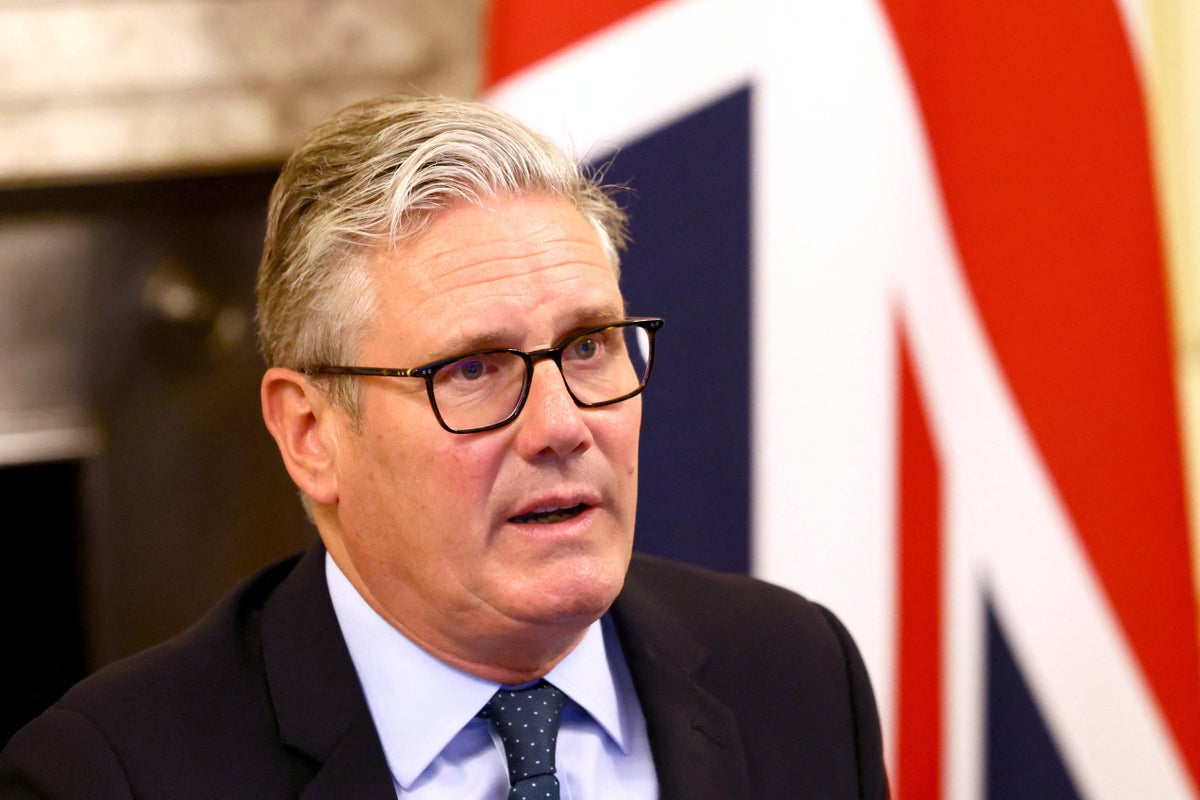Business
Stocks slide and pound dives as bond yields spike

Stocks in London fell sharply on Tuesday and the pound sank, unnerved by a renewed spike in bond yields.
“Warning lights are flashing about increasingly tricky economic conditions and geopolitical risk,” said Susannah Streeter, head of money and markets at Hargreaves Lansdown.
“As concerns collide about the global outlook, inflationary pressures and worrisome public finances, the FTSE 100 remains on the back foot, with other European indices also largely in the red.”
The FTSE 100 index closed down 79.65 points, or 0.9%, at 9,116.69. The FTSE 250 ended 470.80 points lower, or 2.2%, at 21,162.89 and the AIM All-Share finished down 3.07 points, or 0.4%, at 765.57.
In Europe, the Cac 40 in Paris ended down 0.7%, while the Dax 40 in Frankfurt closed 2.3% lower.
“Investors are finding little reason to chase stocks higher when bond markets continue to promote the need for caution,” said Rostro analyst Joshua Mahony.
The yield on UK 30-year government bonds – also known as gilts – jumped to the highest level since 1998, at 5.71% on Tuesday, up seven points from Monday, while the yield on the 10-year bond stretched to 4.81%, up six points.
Gilt yields move counter to the value of the bonds, meaning their prices fall when yields rise.
Bond yields also soared across Europe. In Germany, the 10-year bond climbed four points to 2.79%, while in France, the 10-year bond yield widened to 3.59%, up five points. The yield on 30-year government bonds hit 4.50% in France, a 14-year high. In Italy, the 10-year bond yield increased seven points to 3.71%.
The latest gains came amid political instability in France and concerns over rising government debt across Europe.
Kathleen Brooks at XTB Research said a driver of weakness in the UK bond market could be a delayed reaction to the Government reshuffle on Monday.
“The Prime Minister beefed up his economic team in the lead-up to the budget. This has not gone down too well, with concerns that there is still a strategy void when it comes to the economy, as the Government struggles to deliver the growth that it promised,” she said.
The shake-up saw the chancellor’s deputy Darren Jones move into a new role as Chief Secretary to the Prime Minister.
Sir Keir Starmer also brought in Minouche Shafik, a former Bank of England deputy governor, as his chief economic adviser.
Treasury minister James Murray replaced Mr Jones as Treasury chief secretary, while Chipping Barnet MP Dan Tomlinson replaced Mr Murray as Treasury exchequer secretary.
Simon French, head of economics at Panmure Liberum, said Mr Jones and Ms Shafik were a “sensible” duo of appointments and “long overdue” given the lack of economic expertise in the Prime Minister’s team.
But he noted gilts were sold off partly because Mr Murray and Mr Tomlinson “are seen as more left wing than Darren.”
Ms Brooks said the UK was not an “outlier” as European bond yields were also moving higher.
“A rise in UK yields always garner more attention, because our yields are at a higher level to begin with. However, if UK yields continue to rise, and if they start to rise at a faster rate than elsewhere, then it could be a sign the market is pricing in a growing probability that Rachel Reeves will throw away her fiscal rules and borrow more at the budget to fund spending, rather than increase taxes and stymie growth.”
Deutsche Bank thinks the autumn budget will be a “defining moment” for the UK as the Chancellor looks to fill a fiscal hole worth around £20 billion to £25 billion.
“How the Chancellor decides to fill the fiscal hole will be important,” Deutsche said.
“While we expect fiscal headroom to be restored, we expect the Chancellor to adopt a slightly looser fiscal policy path in the near term, compared to March, with a good chunk of fiscal consolidation likely to be backloaded,” the bank said.
The pound dropped to 1.3389 dollars late on Tuesday afternoon in London, compared with 1.3548 at the equities close on Monday. The euro fell to 1.1659 dollars, against 1.1705 dollars. Against the yen, the dollar was trading higher at 148.20 compared with 147.27.
On the FTSE 100, insurer Legal & General fell 4.5%, while wealth management firms Phoenix Group and St James’s Place declined 4.2% and 3.6% respectively.
Rate sensitive housebuilders Persimmon and Taylor Wimpey fell 3.4% and 3.2%, with the latter not helped by a rating downgrade by Bank of America to “neutral” from “buy”.
Retailer Marks & Spencer tumbled 4.0% on fears consumer spending could stall amid slowing economic growth, and as house broker Shore Capital lowered earnings forecasts.
Electricity generator SSE fell 3.7%, which JPMorgan attributed to “rising UK bond yields and concerns around the company’s balance sheet”. However, JPM sees the weakness as a “buying opportunity”.
On the FTSE 250, Ithaca Energy tumbled 13% as its two leading shareholders sold a 3% stake.
Peel Hunt confirmed DKL Energy, a wholly owned subsidiary of Delek Group, and Eni UK, an indirect wholly owned subsidiary of Eni, offloaded 49.6 million shares. They were placed by Peel Hunt with institutional investors at a price of 213.75p per share for a value of £106.0 million.
Gold hit another record high, climbing to 3,511.91 dollars an ounce on Tuesday against 3,476.94 on Monday.
UBS said elevated political and geopolitical risks underline the appeal of gold, which tends to benefit from uncertainty.
“Gold’s status as a durable long-term portfolio diversifier is strengthening amid higher government debts, persistent inflation, geopolitical risks, and the desire of ex-G10 central banks to raise their longer-term holdings as a percentage of total reserves,” the Swiss bank said.
A barrel of Brent traded at 68.81 dollars late on Tuesday afternoon, up from 68.63 on Monday.
The biggest risers on the FTSE 100 were Fresnillo, up 94.0p at 1,919.0p, Endeavour Mining, up 40.0p at 2,664.0p, Unilever, up 64.0p at 4,728.0p, BP, up 3.1p at 434.2p and Haleon, up 2.5p at 363.2p.
The biggest fallers were Whitbread, down 142.0p at 2,983.0p, Legal & General, down 11.0p at 236.1p, Unite Group, down 30.5p at 674.5p, Phoenix Group, down 28.5p at 653.0p and Land Securities, down 23.0p at 529.0p.
Contributed by Alliance News
Business
Smartworld Developers enters Noida, to invest Rs 2K cr on 1st realty project – The Times of India

Realty firm Smartworld Developers will invest around Rs 2,000 crore to build its first project in Noida, as part of the company’s plan to expand beyond the Gurugram property market. Smartworld Developers has announced its entry into Noida, which is an important micro-market in the Delhi-NCR. The company has acquired a 6-acre land parcel in Sector 98 along the Noida Expressway through an auction process for Rs 414 crore, it said in a statement. Smartworld Developers will build a mixed-use project comprising premium branded residences, high-street retail, and serviced homes. The company will invest around Rs 2,000 crore to build this project, while the estimated revenue exceeds Rs 3,000 crore. “Entry into Noida is a significant milestone for Smartworld Developers as we further strengthen our presence in the NCR region. Noida’s rapidly evolving infrastructure and its growing importance as a key real estate hub offer immense potential,” said Ashish Jerath, President – Sales & Marketing, Smartworld Developers. The company is in discussions with a leading global brand for a potential collaboration on the Noida project. Smartworld Developers clocked Rs 6,400 crore worth of sales bookings last fiscal year, a remarkable 60 per cent annual growth. Gurugram-based Smartworld Developers has delivered around 6.5 million sq ft to date, and another 20 million sq ft is currently under construction. According to real estate consultant PropTiger data, housing sales across eight major cities fell 95,547 units during the third quarter of this calendar year from 96,544 units in the corresponding period of the preceding year. Sales of residential properties in Delhi-NCR decreased 21 per cent to 7,961 units from 10,098 units, said PropTiger, which Aurum PropTech has recently acquired.
Business
IndiGo Faces Massive Flight Cancellations: Can Travel Insurance Save Stranded Flyers?

Last Updated:
IndiGo faces massive flight cancellations despite DGCA rollback, affecting thousands. Experts like advise on travel insurance claims and proper documentation.
ndiGo Disruption Intensifies: What Travel Insurance Covers During Flight Chaos
There seems to be no end to the mayhem of IndiGo’s operational meltdown as hundreds of flights have been cancelled on Saturday. The chaos has continued despite the Directorate General of Civil Aviation (DGCA) rolling back the Flight Duty Time Limitations orders, which were the lead cause to disrupt the capability of carriers to maintain regular operation.
Thousands of passengers, from students to senior citizens to professionals, have been affected in the past few days during the flight cancellations, disrupting their plans and schedules. Along with that, they have to face monetary losses too.
Travel insurance is one such option that travelers can use while facing this kind of situation. Not many of people in India are aware of how a travel insurance works and whether all plans cover flight cancellation costs.
Meet Kapadia, Head of Travel Insurance at Policybazaar.com said that travel Insurance offers fixed pay outs if the traveller is stranded for a specified number of hours (6–12 hours).
“They also reimburse the cost if the flight is cancelled and traveller has to book a new flight, or arrange hotel stay, cover meals, essentials, and other emergency purchase,” Kapadia added.
Customers, however, should know that a very low-priced/ basic product of travel insurance may not pay for non-medical losses from an airline operational cancellation unless that benefit is purchased, according to Chetan Vasudeva, Senior Vice President – Business Development at Elephant.in, Alliance Insurance Brokers.
“No – basic plans may not fully cover losses from airline operational problems unless the policy explicitly includes or has an option for trip cancellation / carrier cancellation, trip interruption, missed-connection or trip-delay benefits,” Vasudeva added.
He further told that many standard travel policies include only basic medical, baggage and emergency assistance by default. “If you want protection specifically against airline operational issues, check for carrier cancellation/trip cancellation/missed-connection or buy a cancel-for-any-reason add-on cover.”
Beyond the financial safety net , the insurer also provides 24×7 assistance and emergency support to help passengers manage disruption with less stress in unfamiliar locations.
What Should Customers Need To Do To Get Claims?
The first 24 hours after a flight cancellation are crucial for building a strong claim file.
The policyholder should immediately need to obtain written proof from the airline such as an email, SMS, or a formal flight disruption certificate, that clearly state the due cause and timing of the cancellation, explained Vasudeva. “At the same time, this is when policyholder should inform their insurance provider’s helpline immediately after the disruption; quick intimation is often listed as a mandatory requirement in most policies,” he added.
During this period, every incidental expense such as food, hotel stays, transport, or rebooking, should be supported with itemized receipts and payment proofs. If the airline offers alternative arrangements like meal vouchers or free accommodation, passengers need to preserve those records as well, because insurers cross-verify what has already been compensated.
Careful documentation in the first 24 hours substantially reduces the chances of queries, delays, or rejection during the processing of claims, Vasudeva stated.
December 06, 2025, 13:56 IST
Read More
Business
North Tyneside Warm Welcome hubs an ‘important’ helping hand

People struggling with high heating bills and other cost-of-living pressures are being encouraged to use a series of “Warm Welcome” spaces this winter.
More than 20 places across North Tyneside, including community hubs, libraries and churches, are taking part in the scheme, which also sees free food and drink offered alongside a range of activities.
The Meadows community centre in North Shields is among them, with sessions each Thursday from noon until 14:30 GMT.
Support worker Jen Buchanan says it means help is available at a time of year when it is badly needed.
“There are no boundaries – everybody is welcome. That’s the message we try to get out there.
“They can have something hot to eat, make new friends or even just charge their phones and iPads.
“We also run craft sessions to encourage more people to come and that helps take away any stigma people might have about coming in for food.
“More and people are coming along, which really shows the importance of schemes like this.”
The hubs can also serve as a way to direct people towards long-term help, Ms Buchanan says, for issues such as struggling to pay heating bills, income support or gaining work skills.
“We have a crisis fund for emergencies and can help get someone gas and electric, or refer them to support groups for longer-term problems.
“We’ve even bought someone new shoes because they were walking around wet.”
The scheme is being funded through North Tyneside Council’s Household Support Fund, which the authority says is part of a range of measures aimed at helping people in the area with cost-of-living pressures.
A list of the venues taking part can be found on the authority’s website.
-

 Tech6 days ago
Tech6 days agoGet Your Steps In From Your Home Office With This Walking Pad—On Sale This Week
-

 Sports5 days ago
Sports5 days agoIndia Triumphs Over South Africa in First ODI Thanks to Kohli’s Heroics – SUCH TV
-

 Fashion5 days ago
Fashion5 days agoResults are in: US Black Friday store visits down, e-visits up, apparel shines
-

 Entertainment5 days ago
Entertainment5 days agoSadie Sink talks about the future of Max in ‘Stranger Things’
-

 Politics5 days ago
Politics5 days agoElon Musk reveals partner’s half-Indian roots, son’s middle name ‘Sekhar’
-

 Tech5 days ago
Tech5 days agoPrague’s City Center Sparkles, Buzzes, and Burns at the Signal Festival
-

 Sports5 days ago
Sports5 days agoBroncos secure thrilling OT victory over Commanders behind clutch performances
-

 Sports5 days ago
Sports5 days agoF1 set for final-race showdown as Verstappen exploits McLaren blunder | The Express Tribune





